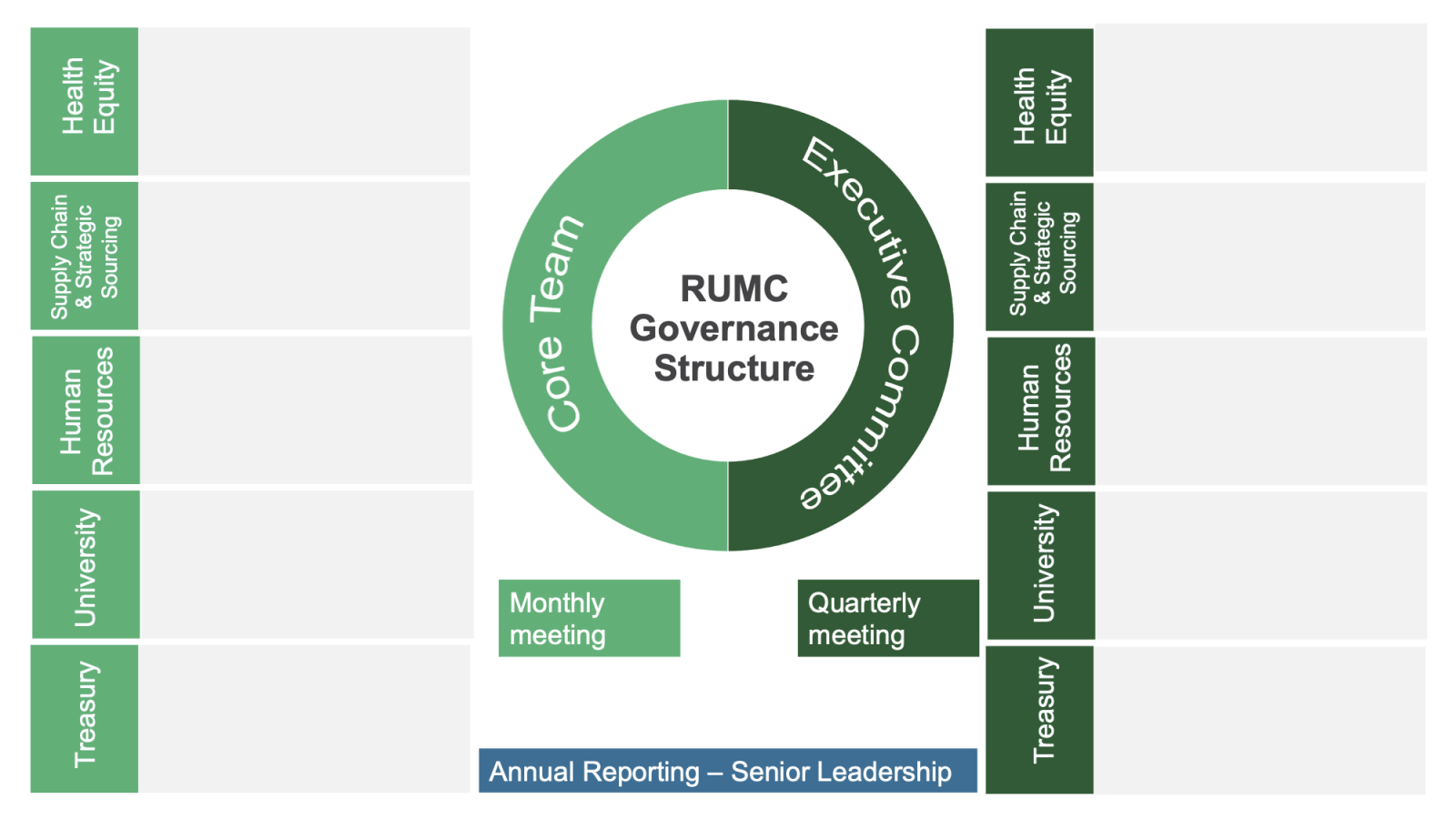Section 3|Maintaining the Anchor Mission Over Time
3.1 Relevant Topics in Maintaining an Anchor Mission
Beyond ensuring the progression of anchor mission initiatives after the pandemic, Rush experienced new learnings and opportunities that evolved during the execution of its anchor mission strategy. While the original playbook outlined a model for the establishment of anchor mission practices, the topics below illustrate the many implications of anchor mission implementation as institutions execute on their strategies over time.
3.2 Knowledge Management and Sustainability
Following the peak of the pandemic, Rush was impacted by the Great Resignation, which was a period marked by many people voluntarily leaving their jobs. The resulting high turnover across both clinical and non-clinical departments also impacted departments that contribute to annual anchor mission goals and strategies, posing a significant challenge to anchor mission execution. For this reason, establishing knowledge management practices to ensure the sustainability of program operations should be a priority in addition to the day-to-day operations of executing an anchor mission strategy.
Some recommendations of knowledge management practices that have worked for Rush are:
-
Goal Setting Dashboards and Historical Data Analyses
Knowledge management includes creating standardized goal setting and progress tracking dashboards that are stored over time and continuously updated based on historical results and regular progress updates for leadership. The dashboards should be managed by the anchor mission team with each department contributing data results to allow for regular updates.
-
Departmental Directory
Anchor mission teams should create a directory containing multiple contacts for each department and specifically noting the positions for all business leads. The directory should be kept up to date in order to track internal turnover and maintain continuity in anchor mission initiatives.
-
Other materials can include marketing collateral, external messaging, and internal/external collaborations that have been documented.
-
See Section 6.5 Establishing an Internal Knowledge Management Framework for more information on creating a framework in support of anchor mission sustainability.
3.3 Departmental Governance Structure and Organizational Reach
A documented governance structure is essential to establishing a core anchor mission team across initiatives and an executive leadership committee that will provide organizational guidance on the trajectory of anchor mission execution. A departmental governance structure expands on Rush’s original anchor mission working group structure to include the contributions of the anchor mission core team and the business unit leads in advancing the anchor mission.
Rush’s first foray into anchor mission execution primarily engaged executive departmental leaders in support of anchor mission initiatives. Our departmental governance structure has shifted from that model to more intentionally engage other key roles within those departments: administrative coordinators, supply chain data analysts, HR recruiters, employee benefit analysts, etc. These individuals purchase, manage contracts, engage with prospective job seekers, and help employees with their benefits questions. Individuals tasked with administrative and operational work perform actions that are crucial to advancing anchor mission strategies but are often overlooked in anchor mission governance structures. Engaging these individuals and including them in the anchor mission directory increases your reach across the organization and further embeds the anchor mission as a priority within its operational structure.
Another learning in Rush’s governance structure framework was to align complementary initiatives across departments, rather than separating initiatives based on a traditional organizational structure. The Rush Local pillar, for example, engages community health and human resources benefits departments in efforts to connect anchor mission activities to our employees and our West Side communities. Prior to that shift, the pillar was based around employee volunteerism, rather than a larger convening of multiple employee engagement initiatives. Similarly, Rush now houses its capital projects initiatives in the Buy Local section rather than employing a separate pillar for the department. This ensures that contracting with local labor is viewed as a purchasing strategy that supports overall efforts to shift spend locally.
3.4 Prioritizing Resource Allocation
Maintaining a consistent commitment to anchor mission implementation over time requires resource allocation that is consistent, defined across business departments, and documented. Anchor mission strategies need a variety of resources to thrive. Rush’s resource allocation strategy was implemented to retain human resources (e.g., business leads carrying out anchor mission strategies), knowledge resources (e.g., anchor mission data and success measures), and financial resources in order to mitigate the risk posed by turnover in departments that support anchor mission implementation.
|
Managing Human Resources |
|
|
Managing Knowledge Resources |
|
|
Managing Financial Resources |
|
